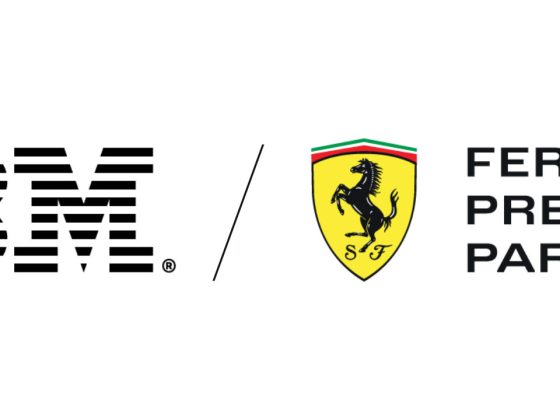The 2023 edition of VMware’s annual State of Kubernetes report is now out, and it’s got a lot of great information about how organizations are using Kubernetes today, as well as the benefits and challenges that go along with that. In this blog post, I’m focusing on one area: multi-cloud.
The concept of going multi-cloud is less contentious than it used to be, now that more and more non-tech enterprises are using lots of public clouds. Whether intentionally or through years of siloed departments and company acquisitions, large organizations tend to run their applications on many different types of infrastructure and clouds. This is what drives much of the multi-cloud interest and usage nowadays. In the State of Kubernetes survey, for example, 76 percent of respondents said they use a multi-cloud strategy.
From our partners:
In our survey, we defined multi-cloud as using multiple public cloud vendors or a mix of public and private clouds, including edge scenarios. Multi-cloud looks like it’s here to stay for as long as we can peer into the future. We’ve seen on-premises-only use continue to drop from 15 percent in 2021 to 10 percent in 2023. These companies aren’t necessarily moving away from on-premises; more likely, they’re adding more types of cloud usage into the mix. This year, more than half (53 percent) of respondents said they plan to add or increase capacity across multiple public cloud vendors, compared to just 36 percent in our 2021 survey.
My ongoing theory is that, as Kubernetes becomes more and more mainstream, the needs and plans of early adopters give way to the more “boring” needs of large, mainstream organizations. In this case, boring is good: it means stability, reliability (all the great “ilitys”).
For many years, IDC has tracked and estimated where applications run*. Going back to 2020, and forecasting to 2024, they estimate about a 50/50 split between on-premises and off-premises, with further breakdown by cloud, not cloud, PaaS, SaaS, etc., as the chart below shows:

Source: IDC, The Evolution of Cloud Infrastructure: Multicloud to Hybrid; Shared to Dedicated, doc #DR2023_T1_DM, March 2023
Both of these surveys validate what I hear consistently from people at large organizations: they’re living multi-cloud.
Motivations

This year, our State of Kubernetes survey found several motivators for using a multi-cloud strategy. Let’s look at some of them, plus a few I often hear about that aren’t represented in the chart above.
Flexibility
Lock-in is always a touchy subject, and there are generally two camps. On one hand, why not go with just one cloud to get both the best of breed and also the benefits of a single-source, integrated stack? On the other hand, there can be a fear of getting stuck on that single source and potentially suffering from both innovation slowdown and price hikes. Diversifying an IT portfolio is a long-held tradition to avoid both of those potential downsides, giving organizations access to the best-fit functionality from multiple sources and giving them leverage and escape routes when they want to seek more affordable tech.
Sovereign cloud
Very few organizations can operate free of sovereign cloud requirements, if not just jurisdictional desires. The American bias of technology and cloud obscures this because the major cloud providers are all American, so American companies (which tend to be very vocal in the overall industry) have little issue using those clouds.
There is, however, as we expats have discovered, the rest of the world.
Just like American companies, companies in other parts of the world would probably prefer to have their compute happening in their own regions, under their own legal systems and financial regulations. As a thought exercise, imagine that there are great, affordable clouds running in another country, say the fictional Zubrowka. Would you feel comfortable running your Global 2,000 enterprise systems in just that country, following its regulations and subject to its laws? While the hotel stays would be divine, and skiing exquisite, you might suddenly get very interested in the sovereign cloud.
It exists
“It’s what we have” is a solid reason to use a multi-cloud strategy. This is simply the current reality for most large organizations. There are two sources of a diverse IT estate: First, years of loosely gardened IT strategy that favored business unit autonomy and speed over centralization and standardization; second, a steady stream of acquisitions that bring entirely new IT estates into the organization. Think of rental car agencies buying each other, banks buying other banks to stabilize the financial system, or just your regular large company expanding its business by buying a small, innovative company.
The larger the organization, the more there is
When it comes to the cloud, it’s a safe bet that the larger the organization, the more types of cloud and infrastructure are being employed. There’s an architectural hygiene-glow to the idea of consolidating that to just one cloud, and I’ve spoken with several organizations that aspire to or have transitioned the majority of their workloads to single clouds. Over many years, perhaps, there’ll be more consolidation. People’s motivations and reasons to be multi-cloud will have to be addressed, or their moods changed—maybe both. At the moment, though, as our survey shows this year, mono-cloud strategies are in the minority. Multi-cloud it is!
Check out the rest of the survey to see what your peers are doing with Kubernetes and help you sort out your own plans. You can also join us for an in-depth look at the whole survey with one of our upcoming free webinars, on June 1 at a US-friendly time and on June 7 at a Europe-friendly time, so register for that if you’re into that kind of thing. And keep an eye on the Tanzu blog for more insights from the 2023 State of Kubernetes report.
*Source: IDC, The Evolution of Cloud Infrastructure: Multicloud to Hybrid; Shared to Dedicated, doc #DR2023_T1_DM, March 2023
By: Michael Coté
Originally published at VMware Tanzeu
Source: Cyberpogo
For enquiries, product placements, sponsorships, and collaborations, connect with us at [email protected]. We'd love to hear from you!
Our humans need coffee too! Your support is highly appreciated, thank you!








